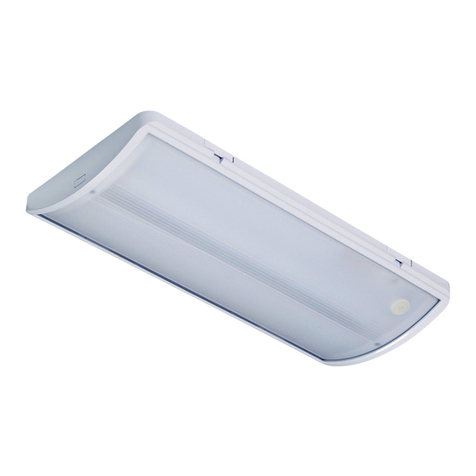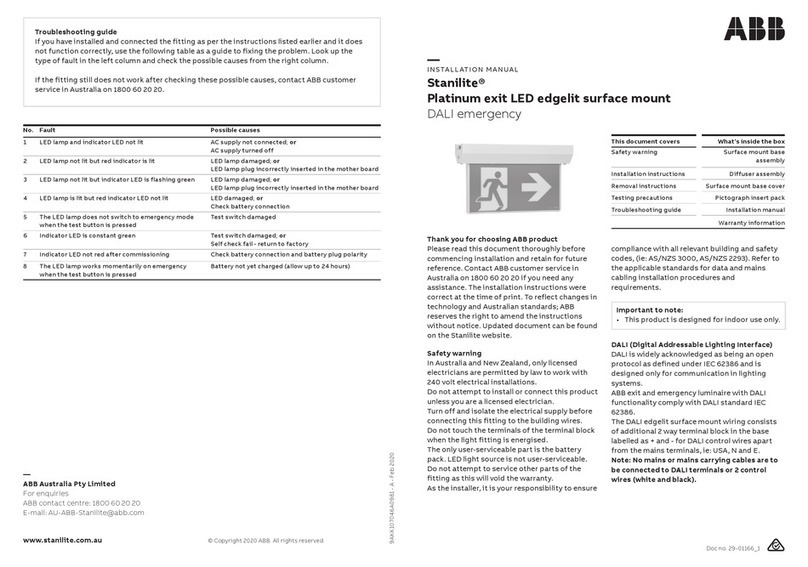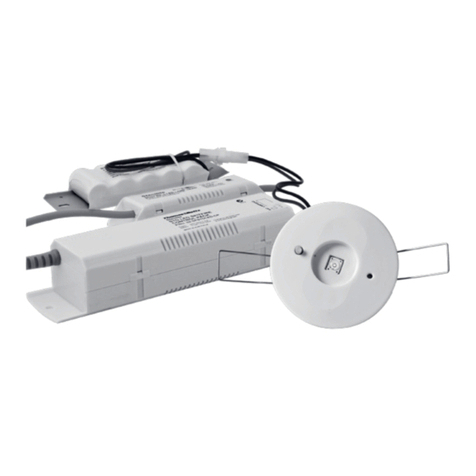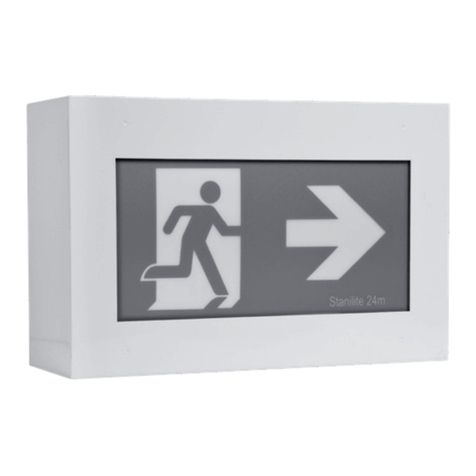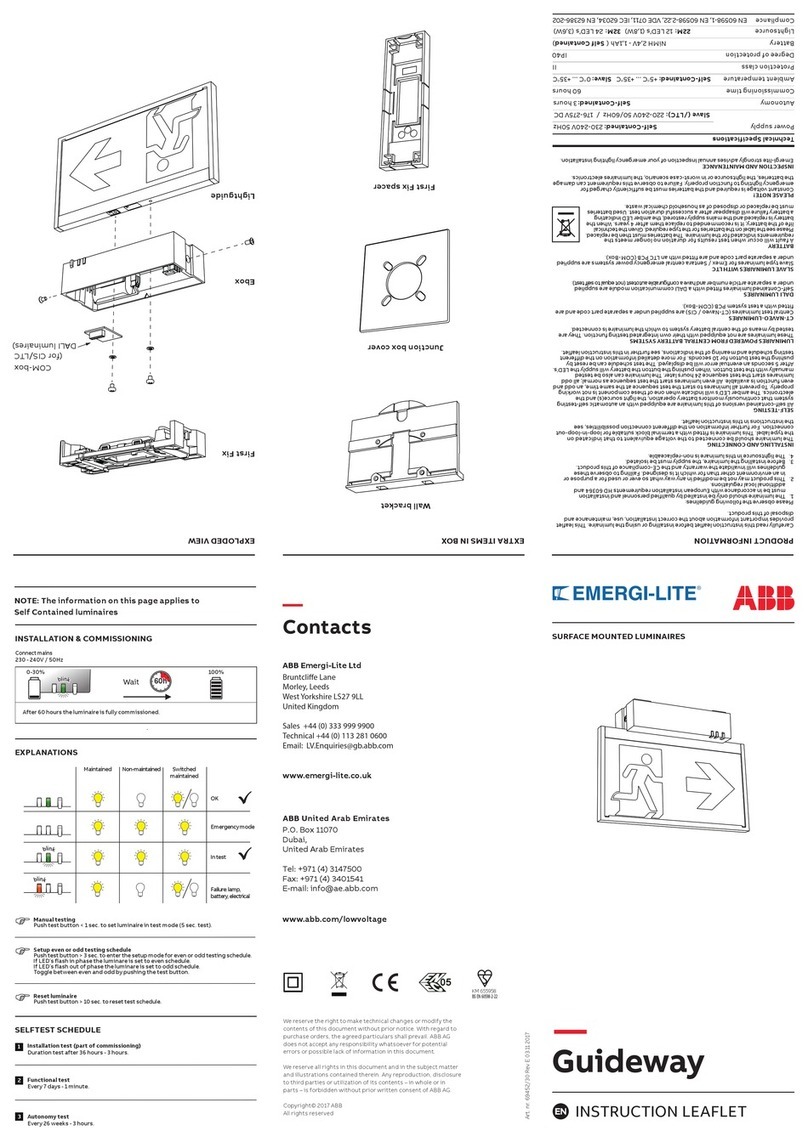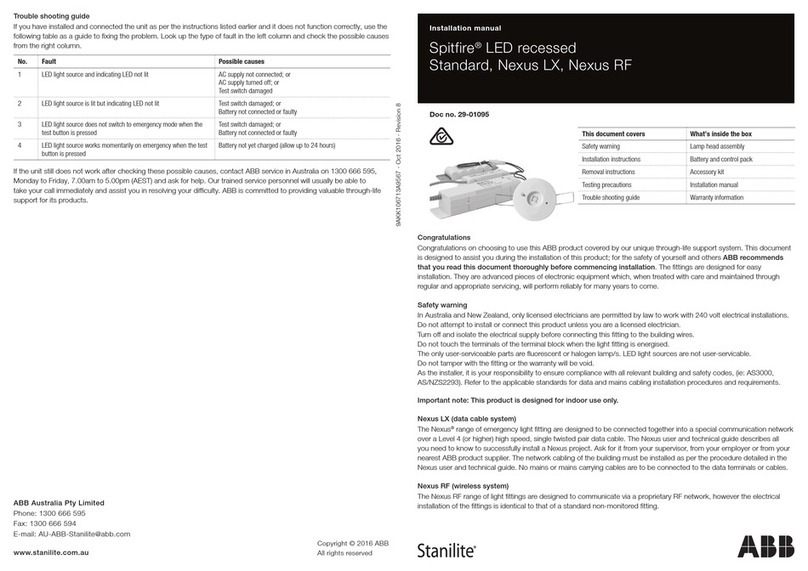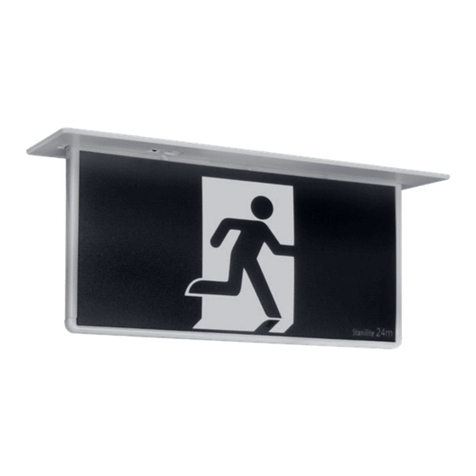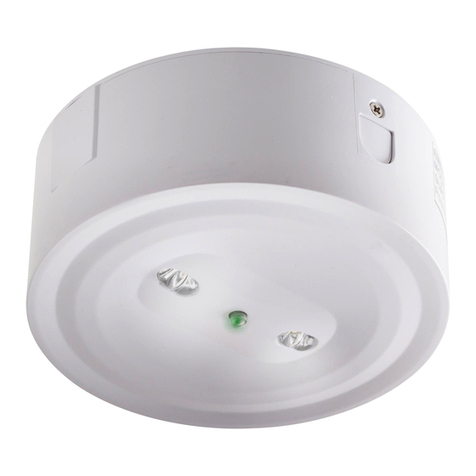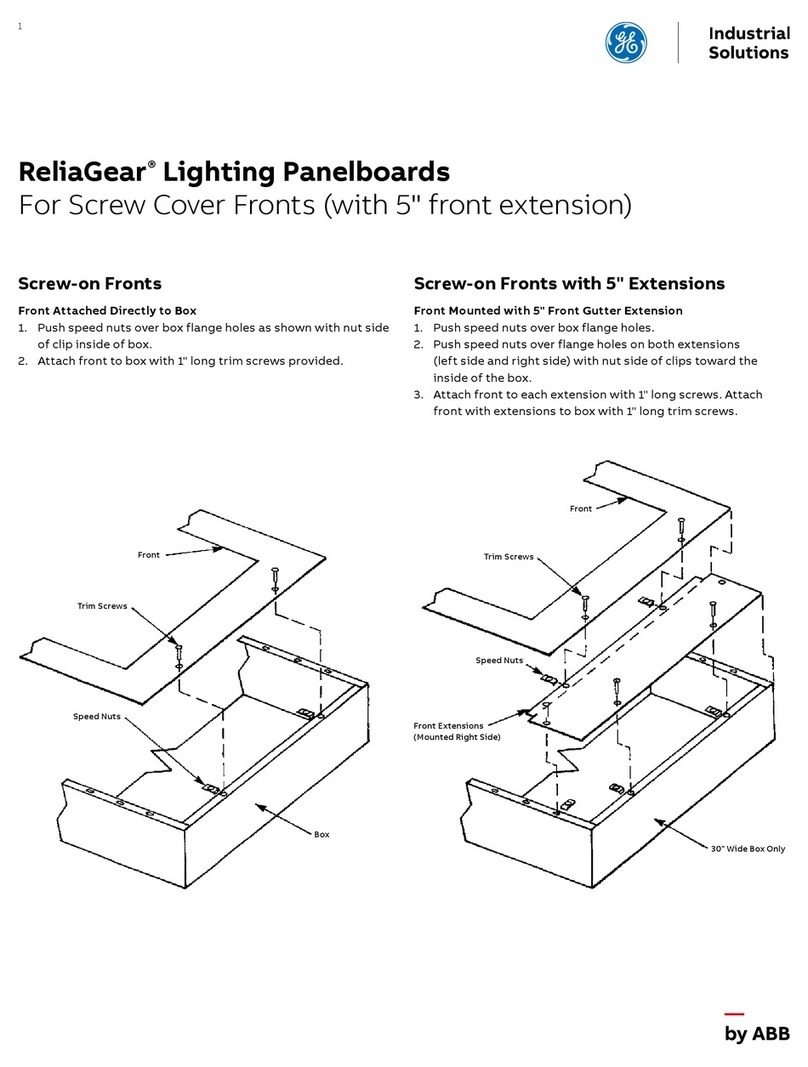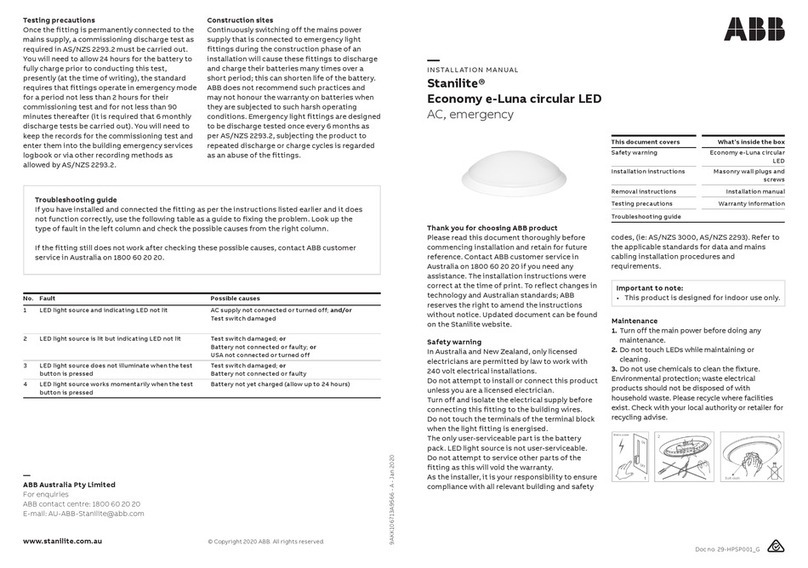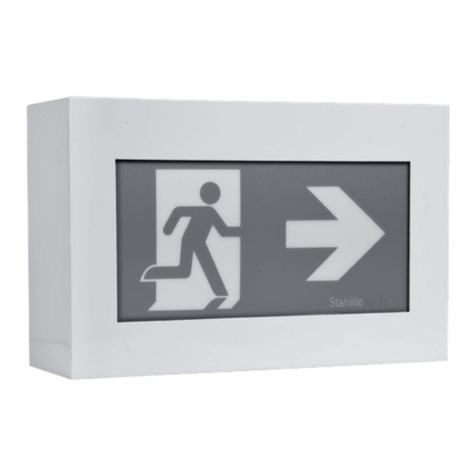
Installation instructions
Note: Due to additional insulation sheet inside the fitting, the diffuser needs to be installed before
recessing the fitting into the ceiling.
Note: The circuit supplying mains power to the fitting must not be energised until installation of
the fitting is completed.
1. Take out the cut-out template (348mm x 97mm) from the packing box; use a pencil to mark the cut-
out position on the ceiling.
2. Preparation of fittings. Remove face plate, connect the diffuser wire loom to the main board and
lay the wire loom carefully inside the base. Connect the battery. Insert 4 nylon stand posts to the
mounting holes in the main board. Align the holes in the insulation sheet to the 4 stand posts.
Firmly press down and secure the insulation sheet to the stand posts. Refer figure 1.
3. Fixing the diffuser. Insert one side of the diffuser in the diffuser holding latch hole and push the
diffuser to the latching hole in the opposite side until the diffuser clicks and locks in place.
4. Installing the fittings to the ceiling cut-out. Recess the base assembly through the ceiling cut-out
(if access to the ceiling cavity is not available, connect the mains power cord and Nexus data cable,
secure with the cable ties supplied, before recessing the base in the ceiling cut-out). Once
recessed in the cut-out, tighten the cam lock screws using suitable size Philips screwdriver or a
power-driven screwdriver set at minimum torque, turning clockwise (refer figure 2), to secure the
product to the ceiling. Connect the mains power cord and Nexus data cable if not connected earlier
and secure with the cable ties supplied.
5. Hold the face plate in your hand; make sure the rectangular hole in the face plate for the LED and
test switch lines up with LED and test switch in the base. Bring up the face plate close to the base,
place the locking tab on one side in the position, the other end locking tab should line up on the
correct position. Once both the locking tabs are in the correct position, press gently, till it clicks
and locks. Press gently in the middle to lock middle 2 tabs, click sound indicates the tabs are
locked in position.
6. Install the pictograph inserts by sliding into the diffuser. The pictograph inserts can be installed in
the diffuser prior to installing the diffuser assembly in the fitting. Fitting is supplied standard
with all pictograph insert options for single and double sided, as complete one box solution to
meet any site/project needs.
Removal instructions
1. To remove/uninstall fitting from the ceiling,
the steps to be followed are the reversal of
installation process. Turn off mains power to
fitting, the fitting will automatically switch
into emergency mode as the mains power has
been turned off. It will stay on the emergency
mode until such time as the battery cut-off
threshold is reached.
2. Remove face plate, gently insert a small
screwdriver into the first slot (first slot is
close to the diffuser end) and pull down
gently, repeat the same on the other end to
remove face plate.
3. To remove diffuser assembly, hold the
diffuser holding latch with thumb on one end
and push gently to the opposite end to
remove diffuser from the holding latch. Once
diffuser is removed from the latch,
disconnect/remove wire loom plug from the
mother board. Once the diffuser assembly is
removed, disconnect the battery pack plug on
the mother board.
4. Loosen the cam lock screws using suitable
size Philips screwdriver or a power driven
screwdriver set at minimum torque, turning
anti-clockwise. Once the cam lock screws are
loosened, the recessed base assembly can be
pulled down gently from the ceilng cut-out,
pull out the mains power cord from the back
of base.
5. When the fitting is reconnected to the mains
supply, it will need time to recharge its
battery before it will be capable of a full
length discharge again. The ability of the
fitting to operate
on emergency is
determined by the
age, charge level,
operating
temperature
conditions and
environmental
circumstances of
the battery in the
fitting.
7. The circuit supplying mains power to the fitting can now be energised. Once powered up, in a
single point unit red LED lamp should energise and remain lit on mains, until the power supply fails.
For Nexus product; the normal initial uncommissioned status of the indicating LED on the fitting is
flashing green. Once commissioned, the LED changes to a steady red and flashes red during test
when receives command from the Nexus system. Please refer to the Nexus user and technical
guide for a full detailed description of all possible LED states and their meanings. The emergency
function of the fitting should only operate when the normal lighting power supply fails or when
somebody presses the manual test button located on the fitting or when commissioned on the
Nexus network and the fitting receives a command from the Nexus controller to switch into
emergency mode.
8. Check the operation of the fitting to ensure that the installation was successful. When powered
up, allow a few minutes to give the battery a small charge, then press the manual test button
9. Hold the test button in for a few seconds and observe the operation of the lamp switching from
mains to the emergency mode. If the lamp on emergency mode works momentarily, that’s okay.
Try again in a few more minutes because if the battery was completely discharged, it may take a
little time to charge up enough to operate even momentarily. After this time, press the test button
again and if the lamp does not work at all, check the supply, the connections and the
troubleshooting guide at the end of this document.
10. Once manually checked as per item 7 above, the Nexus fitting is ready to be communication tested
and commissioned into the Nexus network and registered in the database. Keep the information
details of this fitting including exact location description, DB (distribution board) and CB (circuit
breaker) numbering, channel and router numbering, plan number and cross referencing
information as all this will be required for entry into the database during commissioning. Refer to
the Nexus user and technical guide for full details.
Figure 3: Product installed in ceilingFigure 2: Tight cam lock screw using Philips screwdriver
Figure 4
Figure 1: Preparation of fittings
Insulation sheet Stand post x 4
Important: 24 hours is required to allow the fitting battery to reach full capacity, ie: prior to a
discharge test. As the installer, it is your responsibility to conduct the initial discharge testing of
the installed fitting. Refer to AS/NZS 2293.
